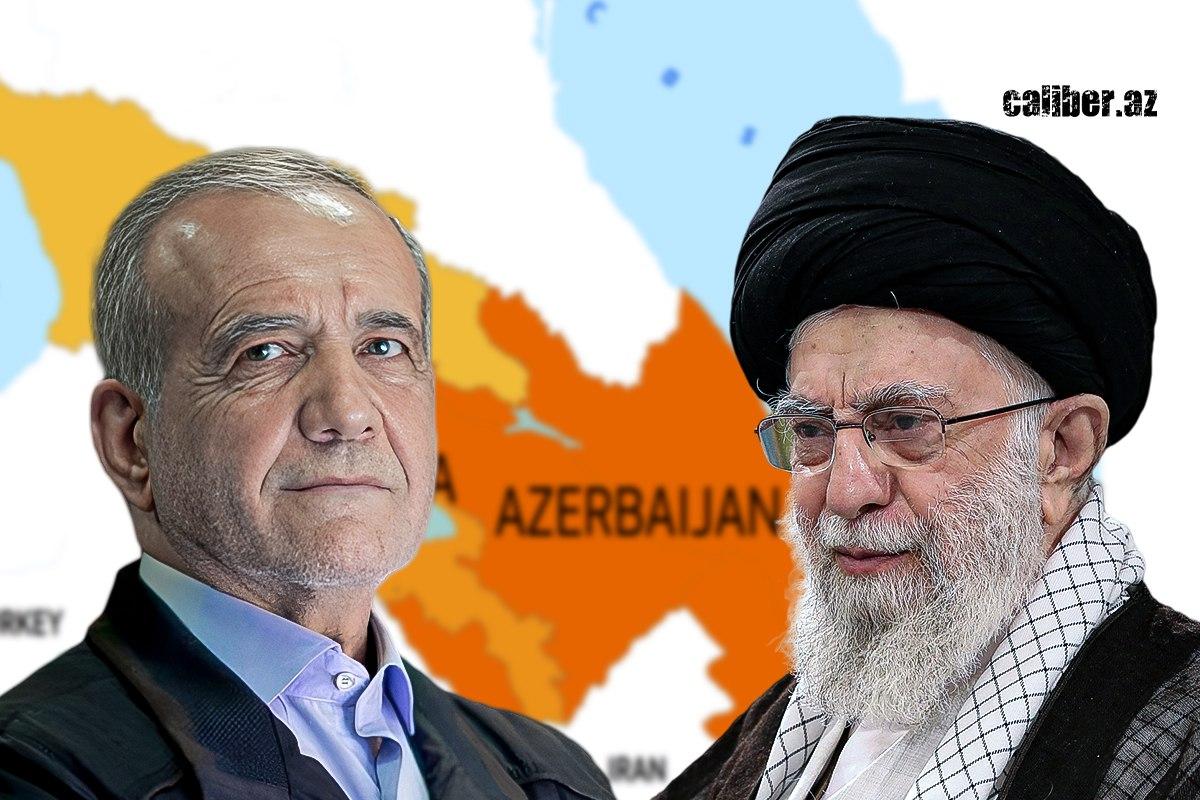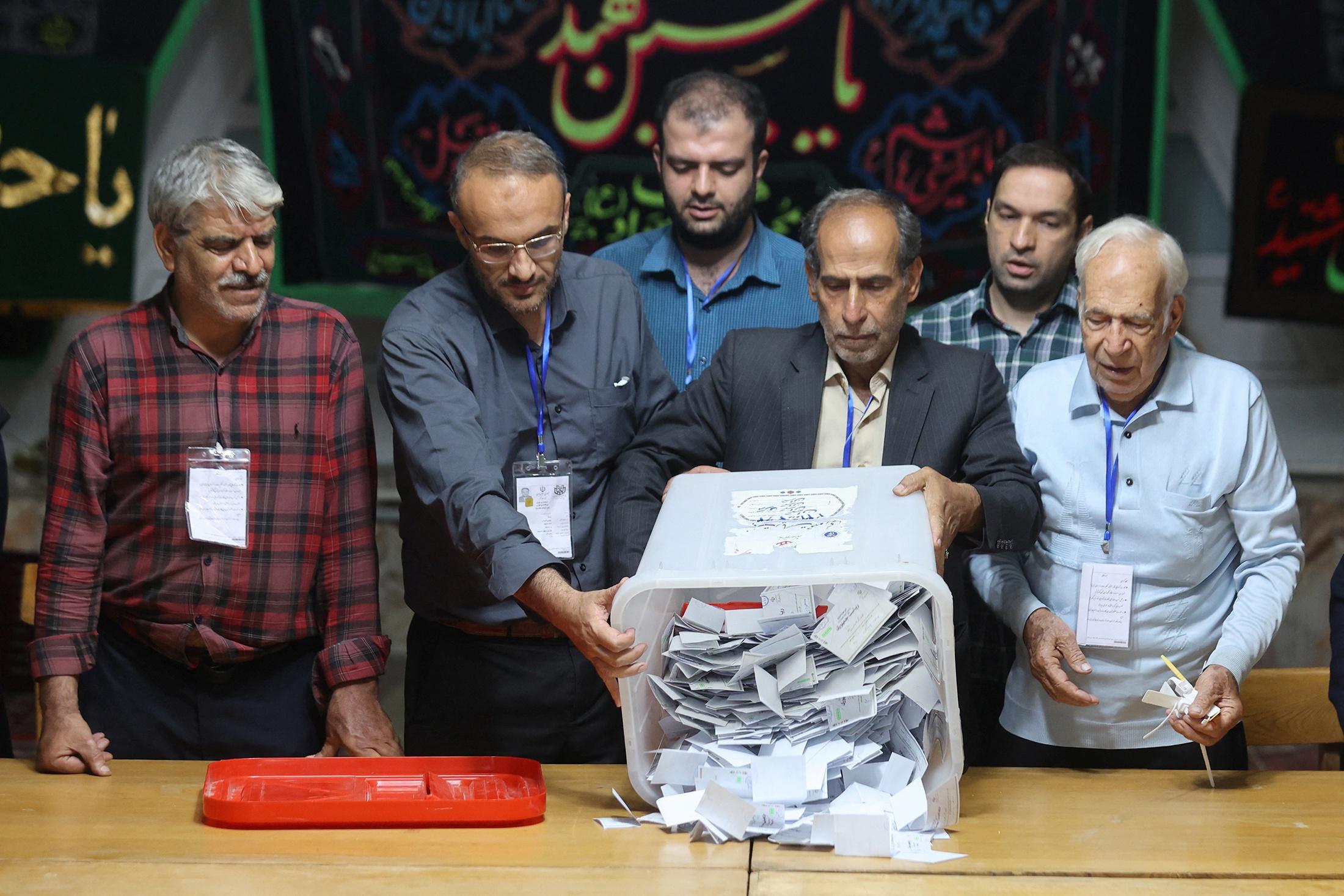Strategic move by Khamenei in the face of rising unrest Masoud Pezeshkian’s presidential win
None of the prominent scholars of Iranian studies predicted Masoud Pezeshkian's victory in the recent Iranian presidential elections. The possibility of his success was not even considered. In the end, all of them were proven wrong. Saeed Jalili was widely recognized as the frontrunner in the race. As a close confidant of Supreme Leader Ali Khamenei within the National Security Council (a powerful institution that brings together all security officials and is directly subordinate to Khamenei), Jalili served as the eyes and ears of his senior boss. Conservative, obedient, and inflexible, he was fanatically devoted to Khamenei, and in many ways, he resembled the former Iranian President Ebrahim Raisi, who tragically lost his life in a plane crash. The renowned US Iran analyst Ali Alfoneh bluntly referred to him as “Raisi 2.0.”
After the Guardian Council—the body of the religious state with the power to approve or disqualify candidates in elections—removed 74 candidates, eliminating all influential public figures and leaving only a few, including Jalili, it became clear who the future president of Iran was likely to be or rather, it seemed so.
Iran is a Velayat-e faqih, a state governed by the supreme theologian and expert in religious law. Elected 35 years ago by the Iranian elite to rule the country, the Supreme Leader, known as the rahbar, Ayatollah Ali Khamenei, wields near-absolute power. He rules through the IRGC (Islamic Revolutionary Guard Corps), an elite military force composed of the most devout soldiers and officers, which also owns both public and private companies that control about half of the economy. The IRGC also operates a network of intelligence services and units designed to disperse and suppress protests.
The Supreme Leader also manages other institutions - special religious foundations with huge sums of money - boniads, the Guardian Council, etc. All this, together with the IRGC, forms the structure of a kind of "church-state".
Alongside this religious state and under its control there is another system of government of the country, typical for the modern era - parliament and presidential power. However, Iran's president is nothing more than the head of the economic bloc and the Foreign Ministry, who is subordinate to the supreme leader.
This strange construct developed after the 1978-1979 revolution. Khamenei holds the real power, and this applies not only to the functions of the various branches of the state system, but also to elections. Relying on the Guardian Council, he can admit or deny anyone he wants as a candidate. It mobilises a huge apparatus of public sector employees - the public sector budget workers - to vote for the right person. Finally, it is his people who count the votes and can count them any way they want.
In the past, Iran has had presidents who belonged to the liberal reformist faction. Although this group is loyal to the Supreme Leader and is part of the system (its representatives hold some minor government positions and have their own media outlets), it allows itself to criticise Khamenei's actions. Reformists are supporters of rapprochement with the West and the nuclear deal with the US, deregulation and privatisation in the economy, and an end or at least a softening of repression against critics of the system. They oppose morality police attacks on women who do not wear the hijab. Since the reformists have no control over the IRGC, intelligence agencies and other security forces, there is little they can do. This also applies to the economy, since they do not control companies owned by the IRGC.
Therefore, the past reformist presidents (Khatami and Rouhani) served as a buffer between the government and society, instilling false hopes for change in part of the Iranians. Still, they were elected to rule the country in relatively competitive elections (unlike the supreme leader) and sometimes said things that were popular with a large part of the population tired of repression and economic hardship.
In addition, the reformists were convenient for the nuclear deal with the US - ending Iran's nuclear military program in exchange for the lifting of Western sanctions. But by the early 2020s, things had changed. No reformists were allowed into the 2022 presidential election, also removing all other factions with independent opinions on some issues. Out of 600 candidates, only seven were left, and then Ebrahim Raisi, a conservative and totally loyal to the supreme leader, was elected as president.
The reason for the ouster of the reformers was that Khamenei had become disillusioned with them. Firstly, the nuclear deal, the key achievement of the reformist faction, was destroyed by the Americans. In 2017, US President Donald Trump withdrew from the deal and imposed heavy economic sanctions on Iran. Why tolerate the reformists if deals with the West fail? Furthermore, public trust in the reformers was eroded as a result of these events.
Secondly, Khamenei is 85 years old, which means that Iran will face a transition of supreme power in the foreseeable future. In this context, the ruling elite—Khamenei himself, the office of the Supreme Leader, and the IRGC command (or a significant part of it)—have an interest in avoiding upheaval. Therefore, they need a compliant person in a significant but non-primary position like that of president. Ebrahim Raisi was such a person, and so is Saeed Jalili.
So why was the reformist Masoud Pezeshkian allowed to run for office at all? And why was he allowed to win?

The fact is that Iranians are gradually ceasing to go to the polls, seeing no point in participating. When Raisi was elected, less than half of Iranians eligible to vote—48.9 per cent—actually went to the polls. This figure includes millions of state employees who are compelled to vote for the approved candidate. As a result, seeing no other viable options within the existing political system, many residents of the country are turning to rebellion.
This view is supported by American sociologists, who have analyzed the 2019 riots and found that the most problematic for the authorities are the densely populated regions with the lowest voter turnout. It is therefore not surprising that one of the largest uprisings, the “Mahsa Amini movement” (sparked by the killing of a 22-year-old woman by the morality police for “improperly wearing the hijab”), erupted during Raisi’s presidency.
Iran's ruler, 85-year-old Khamenei, is at a fork in the road. On the one hand, to ensure a smooth transition of power after his imminent departure in the foreseeable future, he needs someone who is obedient and loyal to him personally, to his administration, and to the conservative IRGC top brass. On the other hand, manipulating the election results outright would likely intensify social and political protests.
A compromise was reached: to boost voter turnout, Masoud Pezeshkian, the former head of the Ministry of Health in the reformist government of 20 years ago, who was not widely popular in society, was allowed to run in the election. At the same time, the senior bosses tried to ensure Jalili’s victory, but their efforts were in vain. Pezeshkian won.
For years, the reformist faction had languished in political isolation, marginalized by hardliners closest to Supreme Leader Ayatollah Ali Khamenei and an electorate disillusioned by the belief that their votes did not matter. This year, few anticipated that the reformists would make a comeback and that their representative would be elected president for the first time since 2001.
However, on July 5, something happened that few could have foreseen a month ago. Masoud Pezeshkian, a physician and long-time member of parliament, defeated the ultra-conservative hardliner Saeed Jalili in the second round of the presidential election with 54.8 per cent of the vote. According to official figures, turnout was extremely low in the first round at 40 per cent and only slightly higher in the second round at 49.8 per cent. This means that Pezeshkian will become president with a smaller share of the popular vote than any other president in the history of the Islamic Republic. For many voters, the primary motive was not support for Pezeshkian but fear of his rival. The overall voter turnout was less than half of the eligible Iranian electorate at 49.8 per cent.

The Iranian-born writer and historian Arash Azizi points out that Iranian citizens sent two negative signals to the authorities. Those who did not vote showed their rejection of the system and the choices they were presented with. Those who did vote said “no” to Jalili, who represented the hardliners. Of course, the Supreme Leader could have avoided this outcome by simply not allowing Pezeshkian to run, but he cannot ignore the fact that the social base of his power is shrinking.
People are exhausted from constantly rising prices and worsening working conditions. More than half of Iranians live in poverty. Tens of thousands took to the streets in protests in 2017, 2019, and 2022-2023, with hundreds killed. The authorities have crushed all protests, but they must realize that they have never addressed the underlying issues that caused these uprisings.
Millions of women continue to commit daily acts of civil disobedience, refusing to comply with the mandatory hijab policy. Prisons are overflowing with political prisoners, including renowned film director Jafar Panahi. Right now, a major strike by workers in the oil and petrochemical industries is breaking out, demanding higher wages and better working conditions as inflation has rendered their salaries worthless.
Protests by national minorities continue in some regions.
A terrible economy, low growth rates, an ever-weakening currency, and skyrocketing inflation have kept Iran's economy in turmoil. Khamenei has probably realized that if he does not change his policy, more social unrest awaits him. Perhaps, in Pezeshkian, he has found a temporary cushion of security that will briefly ensure stability within the country.








